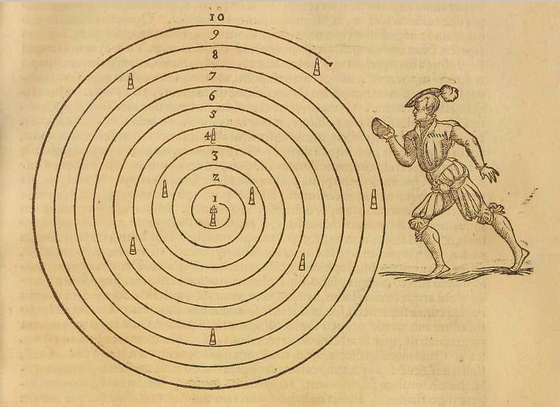A Mathematical Cosmology Model
Observable distances (OD) in the universe are bounded by the age of the universe cubed. Distance (D) = OD+(1/13.8bly-OD)^3

Observable distances (OD) in the universe are bounded by the age of the universe cubed.
Distance (D) = OD+(1/13.8bly-OD)^3
Please scroll down for links below the transcript. This is lightly edited AI generated transcript and there may be errors.
A Mathematical Cosmology Model
mindbodyevolution
Dr. Josh Stout
Eric 0:07
It's Friday, March 1st, and this is season two, Episode ten of Mind Body Evolution. I also want to say if anyone's listening to this, you should check us out at www.mindbodyevolution.info. Josh has some kind of I think explosive things to talk about here that are philosophical but also mathematical and I don't understand it completely. What's going on?
Josh 0:33
Josh Well, yeah, I apologize. This is not my field. I can't help myself. This is, this is actually one of the problems with being ADHD is not only do I get distracted and look at shiny objects in my head all over the place, but then when I really get excited about when I can't let go.
Eric 0:52
I mean, this is also, you know, conversations we've been toying with over over decades.
Josh 0:56
Absolutely. So this isn't something that is new to my brain. But in terms of the mind body evolution, this is something that is a long term concepts within humanity, of the nature of what the universe is, and that it is all one thing. And that it is a bounded, infinite whole. This is this is a long term through line from from the ancients on down.
Eric 1:25
A bounded infinite whole, meaning it's not something we can get out of. There's no outside of there is.
Josh 1:29
There is no outside. And so I've been thinking about this for, for, for, for a very long time. But recently when we were talking about this on the show, I've been thinking about it a lot harder. And actually, personally, I think it has to do with the meditation I've been doing. I'm able actually to strengthen my imagination to it's like building a muscle and that by using visualization, I can build things in my head that can't be seen. But in reality. And so I was able to go a little bit further than I've been thinking in the past and probably getting closer to what maybe the ancients had been thinking about all this time. They're trying to describe what a bounded infinity looks like. And so the Renaissance thinker, Nicholas Cusanus, that I was mentioning last time, described the universe as a or it described God as a circle whose circumference is equal to its center. And so that is the idea of a bounded infinite, because if you have an infinite circle, then the edge and center is everywhere in that circle. That's what the universe is, but it's a sphere. And so I've been thinking about this a lot, but I was mostly thinking about it from a philosophical point until I realized that there might actually be real mathematical relationships that I could derive from the idea of this bounded infinite and that the main the main problem is if I'm living in a universe where the universe is only 13.8 billion years old, and let's say I've got stars A, B, and C, and I'm in B in the middle with A and C on the far sides. If A's 10 billion potentially.
Eric 3:16
Essentially you're on planet B and when you look right, you see Planet A, and when you look left, you see planet C.
Josh 3:23
Exactly. And so each one of these things is 10 billion light years away. Let's say a distance that I can definitely see.
Eric 3:31
We can measure and see. Yeah.
Josh 3:33
We've got great web telescopes, etc. these days. Hubble can see that far as well. But that means that A and C are 20 billion light years from each other.
Eric 3:42
That is that is what it would seem to mean. And I think that's when you look it up on Google. That's what it says.
Josh 3:47
Yeah exactly. And so this would have a problem with my concept of a bounded infinite. There would be two problems. Y Yeah, well, one, it would mean that A and C or 20 billion light years away from each other in a universe that's only 13.8 billion light years old. And so they can't be that far away. Now, one possibility is that the universe is just very, very simple and a can't see see, because it's too far away. It's just it's gone past the beginning of time and it is outside of time.
Eric 4:19
But is it so you're saying that it can't be 20 billion light years apart, but if if the Big Bang happened and two things are traveling in opposite directions, then one can go 13 billion light years at one direction and one can go 13 billion light years in the other direction. So why would that like 26 exactly years apart?
Josh 4:38
It is. It is, except it's still inside a universe. It's only 13.8 billion light years. So those two those two galaxies, let's say, which are 26 billion light years apart, they really are that distance, but they can't appear to each other to be that distance because there hasn't been enough time in the universe for them to be that far apart. So even if they really are, I think they really are that distance apart. They would only they would appear some lesser distance. And I came up with a formula to figure out what that apparent lesser distance would be. I realized that that there has to be a boundary at 13.8 billion light years. And so I made a very simple boundary equation.
Eric 5:21
The boundary is because if things are 20 billion light years apart, they wouldn't be able to see each other because we can't see past well, it's 13 points.
Josh 5:31
It's worse than that. They'd be before the beginning of the universe.
Eric 5:33
Because we'd be seeing past the point where light would let us see right as the Big Bang happened at a point that we can theoretically measure.
Josh 5:41
I have a, I have a… Let's call it faith. It's it's a lot like a faith in a deity, except it's a faith that the universe is a certain way. And one of these articles of faith is that it only is 13.8 billion light years. You know, any age it has a particular age. If it came up with a different age, I would be fine with that. But I've accepted the idea that the universe has a beginning and has a particular age. I reject the idea that there are things before the beginning because it's the beginning of time itself. I reject the idea that there is anything outside the universe because that's the universe. And so by definition, everything has to be inside this. Let's call it a sphere, but it's not a normal sphere by any means, a sphere that has a a boundary in time, 13 8.8 billion light years, but no boundary in space.
Eric 6:38
Oh, wow. That is that is hard.
Josh 6:41
It's really hard to conceptualize.
Eric 6:45
And so the reason the reason that there is this discrepancy is there is a boundary in time, but there is no boundary in space. And since time created space, we have a problem.
Josh 6:54
Well, it's that time created space, but all space occurs within within time. And that time is not infinite. Space may be infinite, but time is not infinite. Time has a beginning and there's nothing before the beginning and there's nothing outside of the beginning. It's just inside of that. Everything in space began at the same time and is in the same place in the future now from the beginning. So you can't go outside of time. Yeah, it just exists. So something, something things that are 20 billion light years away.
Eric 7:27
From each other.
Josh 7:28
From each other will then be converted into a distance within 13.8 billion light years in time so that there is no further. They can get away than 13.8 billion light years, but they're still a distance apart from each other that is observable. So what I did is I came up with an equation that would describe things as within normal space. As long as things are less than 13.8 billion light years, everything appears more or less as it should, that the actual distance to something is the same as the observed distance to something. However, as you get closer to the beginning of time…
Eric 8:10
In other words, as you look further and further away and see older and older light.
Josh 8:14
You get to this boundary. And so I describe the boundary as…
Eric 8:18
And the boundary being the beginning, which we cannot see past.
Josh 8:21
Right? So I just made a mathematical boundary. And so this is something I'm used to in biology. I made it look a lot like a population growth equation because that's what I know how to do. I don't know, advanced physics, math, etc. And I just put a one over 13.8 billion light years minus the observed distance. So as the observed distance gets closer to that 13.8 billion, it's going to divide one and eventually one is going to be over zero.
Eric 8:57
Which you cannot do.
Josh 8:58
Which means you have infinity, right? Which is okay as long as you put it at the very beginning of the universe, you can do that. You can put infinity at the beginning of the universe because it's the beginning of the universe. And so I've hidden infinity one over zero, 13.8 billion light years away. So there is no past that. You can't get to it. And at that point things are infinitely distant. And I also realized that this had to reflect a sphere, a spherical shape. So I didn't just do one over a number that's approaching zero, but I then put it to two pi to the third. I did pi to the third because pi to the third is describing a sphere and three dimensions. And as you get closer to this edge boundary, it's going to go up really, really fast by making it an exponent. It also makes those small numbers smaller so that in normal space you never, ever, ever see them. Because if I have, you know, one over a very small number or one over a very big number, right? So billions, it's now very small, inconsequential to.
Eric 10:10
Yeah.
Josh 10:11
And if I do that to PI to the third exponent it's even smaller, smaller, smaller. So, so it doesn't, it doesn't matter for, for most situations. But here's the interesting thing again terrible math had my daughter helped me find a graphing program and a way to solve these things and I put in some different numbers and so I put 20 in for the actual distance. So I've got these these two stars that are 20 billion light years away. What is it going to come up with? And it came up with they're going to appear to be 12.8 billion light years away in the equation I came up with. And so you end up with everything being packed in right at the end, very close to the Big Bang, but still observable 12.8 billion is something we can see. And so there's a couple of really interesting implications of this, and this is why I wanted to talk today not about the generalized concept, which is hard to wrap your head around if you're not meditating all the time.
By the way, I could not make this equation right. The math is terrible. I literally woke up seeing the boundary condition, like just knowing that this had to be it. And then and then writing it down. I also under I'd graphed it and I, and I knew that the slope of the of the graph had had to do with pi to the third. So these things were were absolutely philosophical concepts that I was struggling to find math to describe.
The math implies some weird things. It implies that a galaxy that's 12.8 billion light years away could be 10 billion light year 10 billion years old because.
Eric 11:52
It's not 12.8 billion years old. It's 10 billion years old. [Josh: Yes.] Even though the light traveled to us over 12.8 billion years.
Josh 12:03
I think so. It's very hard for me to understand at this point. I have problems with the ages of stars as I go back. Because think about it. If I have Galaxies A, B, and C, and I can see Galaxy A is only 10 billion light years away, it can only be 10 billion light years old. But from the point of view of Galaxy C, it's 20 billion light years away.
Eric 12:32
And cannot be seen.
Josh 12:33
And is therefore observable at a distance of 12.8 billion light years.
Eric 12:37
Oh, it is visible.
Josh 12:39
It is visible, but would appear to be slightly older than its actual age and this would continue on. So there would be a distribution of extra young galaxies right at the edge of the universe that were slightly too young. And and it doesn't go to infinity. It wouldn't be an infinite number of all ages because there's sort of a the way this would work, there would be boundaries on how how different from the observation and things could be the you know if I want to get to 21 thing could be, you know, 1 billion light years on one side and 19 billion light years on the other side.
But that observe distance would still only get to.
Eric 13:28
It would have to be less than 13.
Josh 13:30
It would still have to be less than 13.8 billion. And I think there's a way of now deriving the distribution in ages of galaxies. So this is a testable equation. So you could have a predicted ages of galaxies that you would have to see and then you would have actual observed ages of galaxies, which right at the very beginning would show some extra young galaxies. I have a feeling this is true. I think there are some extra young galaxies.
Eric 13:55
We need to see for astronomers and.
Josh 13:56
Physicists. So I have a plan. I have a colleague who studies dark matter and he's going to help me understand this stuff.
Eric 14:03
Oh, that's exciting.
Josh 14:05
To a certain extent. I feel a little bit like I did when I was a kid and discovered that there's a pattern to the nine times table and no one was particularly excited by this but me. So it might just be something that everyone knows and they've written it down differently. So the Einstein field equations are very similar to this in a lot of ways, in that they're describing the shape of of space time. I'm describing it, but minor are very simple equations in many ways, and awe is a very simple equation and it makes some really interesting predictions. And I think those predictions match reality. But I need to talk to some people who know reality so I can find that out. Yeah.
Eric 14:46
You talking to me? I just listening. I have no clue.
Josh 14:49
Well, I mean you had the best question to this right from the very beginning that I think is, is there's sort of two major problems with my idea. One is that, you know, maybe things are just out of sight. My objection to that would be there before the beginning of time.
Eric 15:03
In that case. That would be your thinking, that they would have to be before the beginning.
Josh 15:07
Right, Because there's a beginning and you can't be 20 billion light years away without being before the beginning. Right. But that would be a very simple way to explain it. We have an infinite universe and some things are just out of sight because they're before the beginning.
Eric 15:21
Well, that doesn't sound simple if it's before the beginning. Or it could be that they started at the beginning…
Josh 15:25
And they just moved away..
Eric 15:26
And they just moved away.
Josh 15:27
We just can't see them, right? Yeah, because that would be a very simple way of seeing that. I disagree with that because I don't think there's a universe outside the universe. I think there is. Everything has to be contained in it. And so that's why I came up with this equation, to describe the boundaries at the edge of this infinite sphere.
Some other things happen. Right, right at 13.8 billion light years, galaxies would be infinitely far away or orderly or approaching infinite. Yes. And then there's there is there's there's another match with this is as as you get to the beginning of time, galaxies start appearing larger and larger.
Eric 16:07
Is this is this something that.
Josh 16:08
This is real? Okay, so this is real. They get smaller and smaller, like most things do as they get further away because, you know, just the angle perspective. Yeah. Yeah. That things get smaller as they go further away and then they get bigger. And there's no way to think about that except it's sort of being projected on the outside of a sphere. And so it's like being projected on the outside is here becomes bigger and bigger and bigger. Like looking at yourself in a spoon, say your face fills the entire inside of the spoon. That's what's happening to these galaxies. So this point, like beginning of time, is the edge of a wall that is reflecting basically these, these galaxies that are filling the whole edge of the wall. It's a really weird way to think about it, but this is what I've been I can do in, in meditation.
Eric 16:54
It's actually connected to the background.
Josh 16:57
Microwave Yeah, So, so, so that is the big bang spread over everywhere we can see.
Eric 17:03
As we look farther and farther back in time, things get spread out and larger as we get closer to the very beginning until.
Josh 17:10
Eventually.
Eric 17:11
Everything just circles around.
Josh 17:13
There is an infinitely small point that is in every direction, filling everything. It's the edge. That infinitely small point that's the center is also an infinitely large edge. Now, thinking about infinities.
Eric 17:27
But this goes back to your to your renaissance, thinking.
Josh 17:30
Exactly. Exactly. So if you if you accept the idea of an infinitely large sphere whose center is equal to its edge, you can start thinking about these sort of curved infinities. There's no curve involved. Everything is straight, and yet it's existing in a sphere. It's a lot like if you were sailing on an ocean, you would just go round and round in a straight line. Yeah. And you would never be on a sphere as far as you could tell. You would just be moving in a straight line. If you were moving through space, there's no curvature. Everything would just be straight. Yeah. And it's only time that the beginning of time that everything becomes this.
Eric 18:12
Well, it's sort of like. But if, if, if, if the center is wherever you are. Right. I mean that's what, that's what, that's what you're.
Josh 18:21
Well, because everything is equally distant from the beginning of time. Right. We're all the same age.
Eric 18:26
Or, or, or the fact that we exist now doesn't change whatever we we can't It doesn't matter how fast we travel, we can't travel back in time. We can go towards what we see is the most distant thing, but that's in every direction.
Josh 18:42
It's in every direction. But it's it's it's more than that. So my ABC Galaxies. Yeah, they have a D, E, F, G, so they keep going. So wherever you are in the universe, you're going to be able to see stars around you in the same way wherever you are in the universe. Yeah, it doesn't matter where you are. And there needs to be a series of stars going to infinity.
Eric 19:09
For that to work.
Josh 19:09
For that to work. Because wherever you are, you would see these stars going back to the beginning of time, everywhere, anywhere you are right.
Eric 19:17
The cosmological, constant. Everything is the same everywhere you are.
Josh 19:20
Everything is the same everywhere. So you could just take these bubbles and stack them to infinity so that they're all lined up in a row, starting at the beginning of time, or actually the know starting and ending of that line right there would just be it just goes on an infinite in all directions. Yeah, it's turtle. So how do I, how do I pack this into a sphere? And that's what I used, you know, pi to the third exponent with a one over zero. I'm ending up with getting closer and closer to infinity right at the edge. But everything has a particular distance, no matter how far away it is. It hasn't reached infinity yet. Right? So there always is a distance. It can be at a certain point as you get closer and closer to the beginning of time, you do hit an an observation wall where the energy of the universe itself is so high you can't see through it.
Eric 20:12
Right. Everything is essentially so hot that it can't.
Josh 20:15
Light hasn't been freed, etc.. Right. And this this sort of hides all the real problems.
Eric 20:19
But this is this what they call was this expansion, was that in the initial expansion phase where everything was just so hot and expanding?
Josh 20:27
Yeah. So you're going so as you look backwards in time, things are redshifted in distance. As you look out in distance, things are Redshifted You're also looking backwards in time that redshift gets bigger. The further away you go.
Eric 20:42
It gets more and more elongated.
Josh 20:44
But it's not a linear process. It is it is an exponential process and it starts to approach infinity as you reach it. Just as you'd expect. If those stars are infinitely far away, right at the edge, you'd have infinite redshift right at the edge. None of this in my book. Here's the weird thing about my theory None of this means movement per say. It's a matter of geometry. So just like the galaxies are getting bigger as you see towards the edge, not because they're getting bigger, but because of the geometry of, say, looking in the inner reflection of the curved spoon. Your face scales the whole course. Boom. Yeah. The same thing is happening with distance. The distance is approaching infinity without there being movement as such and as distance approaches infinity, it would it would be stretching space time itself and therefore red shifting things. And so you would get I don't know if the entire expansion of the universe is caused by this, but certainly the early seemingly infinite redshift expansion can be explained simply by a geometry of an infinite sphere. And what the geometry of an infinity well is.
Eric 22:00
Yeah, yeah, yeah. It's just one of the things that's almost impossible to contain in your head.
Josh 22:04
It is? I don't know. I don't know how you would do like, you know, geometry. Like, like, like we normally do geometry. Like what's, what's the diameter? The diameter is 13.8. What's, what's, what's the the surface area. The surface area is infinity. Infinite. Yeah. Yeah. So how do you end up with an infinite surface area and, and a diameter of 13 point 8.
Eric 22:33
Something that is measurable leads to something infinite. That couldn't possibly be. But that's what you're saying.
Josh 22:38
But the radius is also 13.8.
Eric 22:41
And light has a constant speed no matter how it's observed, or where.
Josh 22:46
Exactly. Yeah.
Eric 22:46
Just these things are.
Josh 22:47
They are. They're true. They're difficult, but they're. But they are. You can contemplate them and you can build real structures thinking about them.
Eric 22:55
Well, that's what Einstein was doing, really just thinking.
Josh 22:58
And that what I’m trying to do. Yeah. And so I know I'm really naive and I've come up with a very simple way to talk about it, But I might have figured out something that people aren't seeing other ways.
Eric 23:08
Well, I mean, this is the way, you know, all, all brilliant people tell the stories of their past. They're like, If I had talked to anybody, they would have told me I couldn't do it and I wouldn't have done it. Well, well, let's find out.
Josh 23:20
So I just want to mention one more prediction, please. So. So I have the prediction of the distance, which will give you a prediction of ages of galaxies that is actually observable. And you could compare predicted ages for a standard model. And what my model would predict, you could you can compare these two things. There are so many variants in models that I think most of them would cover all of that wiggle room. So I don't know if there's a single answer there, but it's at least theoretically testable. There's another one that has to do with density. I haven't quite figured it out, but as you move away from Earth, you're in an expanding sphere and any given layer of this sphere, there's more galaxies because you've got a larger surface area to your sphere and you've got, you know, galaxies just lying on this sphere. So in a billion light years you've got all the galaxies that are a billion light years away, and that equals a particular number based on the density of average average density of galaxies. And the shape of this here and you keep doing that. And so every time you expand a billion light years, you're going to have more galaxies. And this is going to happen in a very repeatable way, except when you get towards the edges. Now you're going to have things where there's you're looking at something that's a sphere that's actually 20 billion light years around, but it only appears 12.8 billion light years around. You're going to have excess galaxies being observed by my theory, right?
Eric 24:52
You can't fit them all in.
Josh 24:53
You can't fit. Well, you can. There's a lot of space. And 12.8 isn't that different from ten, let's say. Okay. Right. Because it is it's different, but it's it's it's it's you know, that that that would be the difference is in age 20 billion light years would give you a sphere of of galaxies that's a lot bigger than 12.8 billion. Yes but again, not that much more. As you get towards the beginning, you're going to get to a point where that much more is at the very beginning. My thing would predict an infinite size sphere and therefore infinite numbers of galaxies. Luckily for my theory, this is contained at the Big Bang, so you can't actually see it, right? I suspect where things get really, really weird in my description is going to happen inside this place. You can't observe because light hasn't even escaped matter or matter hasn't become matter. And all of these things, no differentiation. You don't actually get to infinity because it's just a sea of energy that is itself, at least theoretically dense in energy. So it's fine to predict infinite galaxies behind this wall of infinity. Mm hmm. So anyway, I just wanted to say this stuff for today. I wanted it to be a short talk. I have I definitely have predictions that are testable and disagree with modern, modern models. I have predictions for ages of galaxies and density of galaxies that are observable, and I have an equation to predict them.
Eric 26:29
Are you are you ready to post that equation?
Josh 26:31
Yeah, I'll post. I'll post it underneath this talk.
Eric 26:33
We'll, we'll, we'll put it on the website again that's WW w dot mind body evolution dot info which is the official website of of the podcast. I have to tell you you know this this conversation has always been on the edges of my ability to contain it in my head, but I find it consistently fascinating and I love that you are reaching out towards these other, these other areas of, of mental as well.
Josh 27:02
Really exploration the dark matter guy, he's a colleague. I'm really excited to chat with him, you know Dr. Gerada and he he, I hope he has an open mind about this because one what dark matter is used to do is to explain the cosmological constant. Yes. And the difference between my observed and actual distances may actually be the cosmological constant. That might be what flattens everything.
Eric 27:32
What you're getting at.
Josh 27:32
What I'm getting at.
Eric 27:33
Yeah. Yeah. I mean.
Josh 27:34
So there might not be any dark energy.
Eric 27:37
Oh, I was just going to say like, energy because they're there. This is the latest thing. Yes. They're feeling well. Energy is if.
Josh 27:43
We really are accelerating my stuff doesn't explain it. But rather than just sort of doing steady state. But I can I can definitely explain expansion at the beginning of the universe. So it's going to be really interesting to talk to someone who really studies this stuff. Yeah. To find out what's happening.
Eric 27:57
I thought later things accelerating was an accepted reality.
Josh 28:02
More or less. But there are people who definitely think that starting around 6 billion years ago, the universe started accelerating again. But I'm having a hard time understanding that seeing it, I don't haven't seen good data for it, but it's definitely the the, the the consensus model right now. And so I want to talk to someone who understands it so I can play my model off of that.
Eric 28:22
I look forward to having those conversations and then I look forward to bringing some of these interesting people into this. I hope so. Podcast. That'll be great. All right, Excellent. Thank you. Josh, Until next time.
Josh 28:31
Thank you, Eric.

Theme Music
Theme music by
sirobosi frawstakwa






